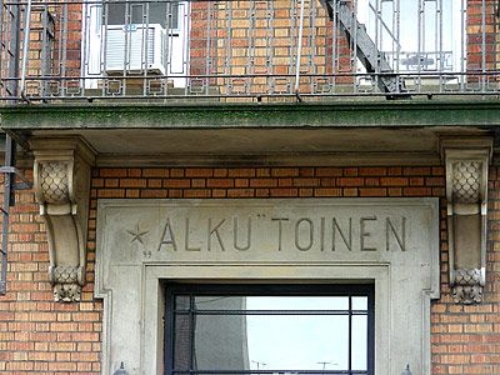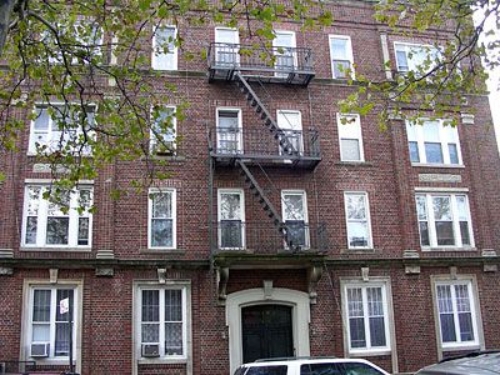Building of the Day: 826 43rd Street
Driving through Sunset Park, you might overlook this building and its neighbors, as they seem to be rather unassuming and simple apartment buildings, probably built before the 1920s.

Photo: Kate Leonova for Property Shark, 2007
Brooklyn, one building at a time.
Name: Alku Toinen Cooperative Apartments
Address: 826 43rd Street
Cross Streets: 8th and 9th Avenues
Neighborhood: Sunset Park
Year Built: 1916-17
Architectural Style: Vaguely Arts &Crafts
Architect: Eric O. Holmgren
Other Work by Architect: Evening Star Baptist Church (former Later Day Saints Chapel), St. Paul’s Lutheran Church in Bed Stuy; 189 Ocean Avenue, PLG; theaters in Williamsburg; 122-134 Brooklyn Ave, Crown Heights North and other buildings.
Landmarked: No, but on the National Register of Historic Places (1988)
The story: Driving through Sunset Park, you might overlook this building and its neighbors, as they seem to be rather unassuming and simple apartment buildings, probably built before the 1920s. You’d be right about the date, but wrong in assuming that these buildings are not important. The name of the building, carved above the door is a clue: Alku Toinen. What is that? A proper name? And what language? Is there more to this than meets the eye? Of course!
Alku Toinen is Finnish, and means “Beginning Two.” There is an Alku, as well, just next door at 816 43rd Street. That was the real “Beginning.” These buildings are the first non-profit cooperative apartments in the entire United States. They were built by the Finnish Home Building Association, a group of sixteen Finnish families who received a permit for their first building, Alku, in 1916. Alku Toinen was next.
The idea of a non-profit housing cooperative was so new to the country that they were not even classified as housing, as there was no classification on the books for this kind of cooperative. The state had to classify them under the Department of Agriculture, which regulated cooperative farms.
The two Alku buildings were the design of Eric O. Holmgren. He practiced here in Brooklyn from 1896 until just before his death in 1950. We don’t know all that much about him except that he was president of the Brooklyn chapter of the AIA during the 1940s. His existing body of work consists mostly of rather modest brick housing, three theaters in the old Eastern District, and a several churches, of which his chapel for the Latter Day Saints is the most interesting.
The Finnish community in Sunset Park was very insular, as their language and culture is not derived from the same Scandinavian base as Norway, Denmark and Sweden, countries that also had large populations in the area. As a group, they formed more cooperative associations and mutual aid societies than other immigrant groups around them, such as the Irish, Italians and Scandinavians. In ten years, Alku and Alku Toinen were a part of “Finntown,” also known as Goat Hill, or “Pukin Maki” in Finnish, which at its height was a twenty-five building enclave, all with cooperative housing, a cooperative restaurant, bakery, pool room, meat market, grocery store and parking garage.
Although other cooperative housing complexes sponsored by labor unions or the city were soon developed, this was the first and only cooperative housing to have a clear ethnic affiliation. Once a community of almost 10,000 Finns, now, almost one hundred years later, there are only a few Finnish names left on the directories of the buildings. Alku and Alku Toinen were the center of the Sunset Park Finnish community. Although the people have changed, the buildings still remain, in good shape, and as reminders of the ethnic diversity that still contributes to the growth and economic strength of Brooklyn. GMAP








What's Your Take? Leave a Comment